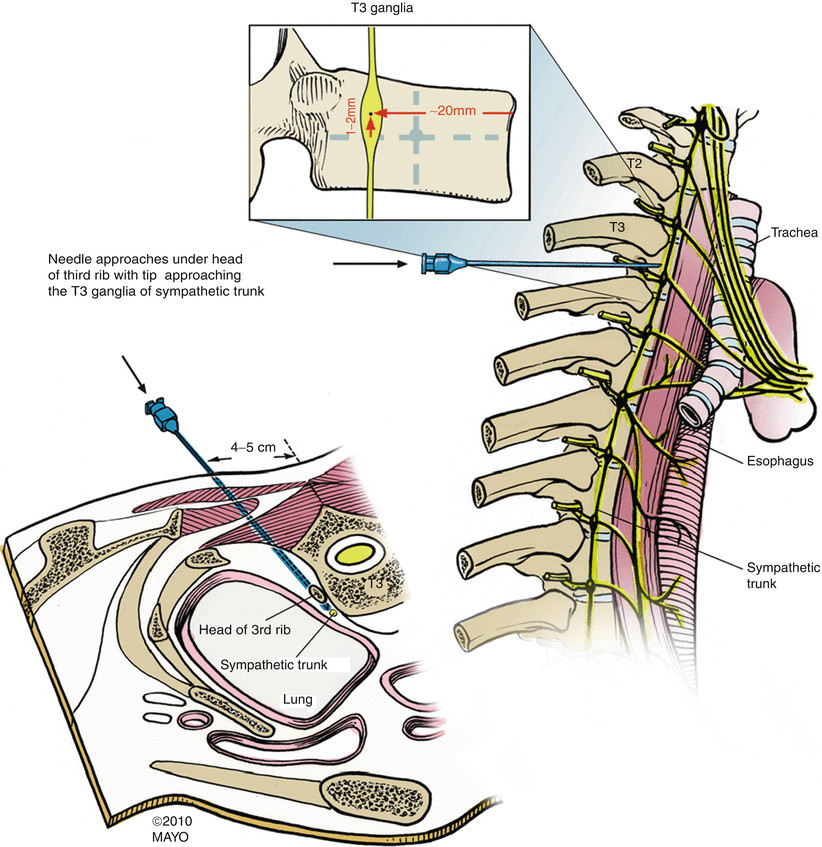What is a lumbar sympathetic block?
A lumbar sympathetic block is an injection of medication that helps relieve lower back or leg pain (sciatica). It can be used to treat:
Reflex sympathetic dystrophy
Complex regional pain syndrome
Herpes zoster infection (shingles) involving the legs
Vascular insufficiency
Peripheral neuropathy
Sympathetic nerves are located on both sides of your spine, in your lower back. A steroid medication and local anesthetic injected into or around your sympathetic nerves can help reduce pain in that area.
At Aptiva Health, we offer same-day and walk-in appointments for spine injuries and conditions to evaluate, diagnose, and make the appropriate referral for additional treatment based upon your specific spine injury or condition. We treat spine injuries and conditions in our Spine, Pain Management, General Medicine, Orthopedics, and Physical Therapy departments.
How is a lumbar sympathetic block done?
First, you will lie on your stomach on an x-ray table. The doctor will numb an area of skin on your lower back with a local anesthetic. Then, guided by an x-ray, he or she will:
Insert a needle into your back, along the outside of your spine
Then Inject dye to confirm that medication will go to the correct spot
Then Inject a local anesthetic and steroid medication
Usually, the procedure takes less than 15 minutes, and you can go home the same day.
How effective is a lumbar sympathetic block?
Some patients report pain relief immediately after the injection, but the pain may return a few hours later as the anesthetic wears off. Longer term relief usually begins in two to three days, once the steroid begins to work. Usually people need a series of injections to continue the pain relief. Sometimes it takes only two injections; sometimes it takes more than 10.
Will the injection hurt?
Your doctor will inject a numbing medication over your back. You may feel some stinging from the needle or the numbing medication. You may also feel some pressure or an increase in your normal level of pain while the contrast dye, and then steroid mixed with local anesthetic is being injected. The temporary increase in pain may last for a few days after the procedure, until the steroid starts to work. Again, the injection will take less than 15 minutes to complete.
What happens after the procedure?
Your lower back and leg may feel warm or “different,” and you may begin to feel less pain. Your leg may feel numb or weak, but this feeling will subside when the anesthetic wears off. You can continue your regular diet and medications immediately, but do not drive or do any rigorous activity for 24 hours after the procedure. Take it easy. You can return to your normal activities the next day.
What are the risks and side effects?
Serious side effects and complications are rare. The most common problem after the injection is having pain or bruising in the area of the injection for a few days. The other complications are infection, bleeding and nerve injury. These complications are minimized by stopping blood thinners, using sterile technique, and fluoroscopy for x-ray needle guidance.
What is the next step after the injection?
You will be given a pain log to complete after the procedure. This will help us to measure your response to the injection and determine the next most appropriate plan of care. Please bring your pain log with you to your follow up appointment.
Is a lumbar sympathetic block right for you?
A lumbar sympathetic block may be right for you if you have lower back or leg pain — especially linked to reflex sympathetic dystrophy or complex regional pain syndrome — which does not respond to other treatment.




